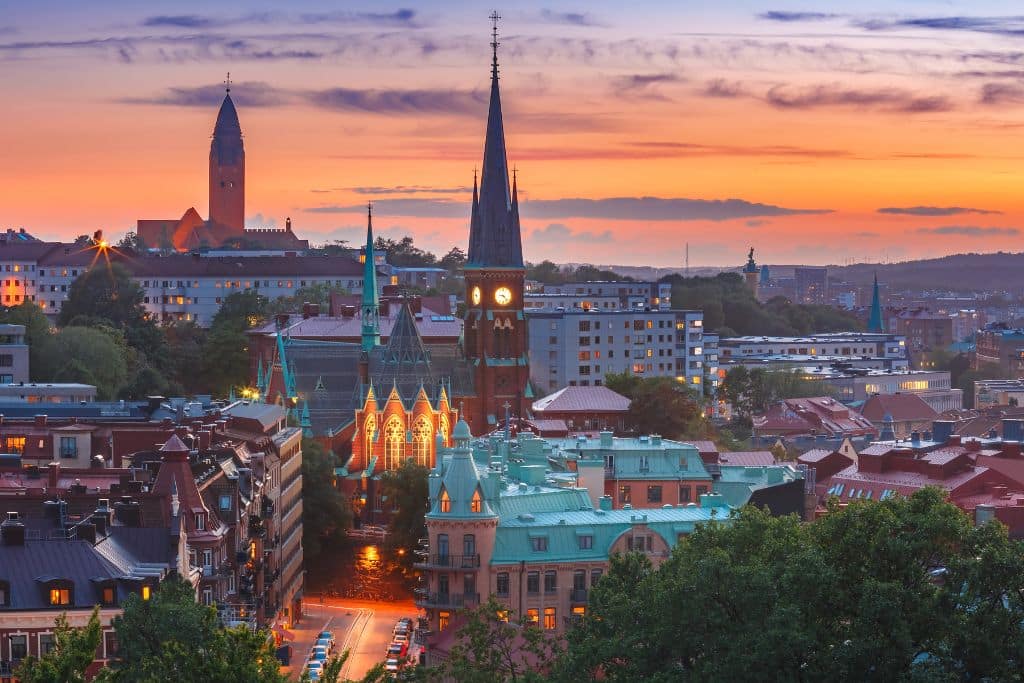Gothenburg, the Nordic city aloof from worldly cares, topped the ranking for the world’s most sustainable cities five years in a row. Once an industrial port city, Gothenburg is also considered one of the top-greenest cities in Europe and thus increasingly popular among international tourists. We take a look at the secrets behind its sustainability success story.
—
Government And Private Sectors Come Together to Promote Local Sustainability
It is a well-known fact that Scandinavian countries have been leading the pack in sustainable practices – a success greatly attributed to consistent governmental efforts and positive cooperation among different sectors.
With regard to sustainability thinking, Sweden was undoubtedly a trailblazer. As early as the 1990s, the government began pushing for sustainable development.
In 1992, the United Nations Conference on Environment and Development (UNCED) adopted the Agenda21, which outlines an “action plan” for sustainable development worldwide to ensure that life in the next millennium will change significantly for the better. Since then, Sweden has solidified its position as the pioneer and initiator of sustainability actions. Following up on Aalborg Declaration, the urban sustainability initiative approved by the participants at the first European Conference on Sustainable Cities and Towns in Denmark in 1994, as well as the criteria set out in the Aalborg Commitments in correspondence to Agenda 21, Sweden further specified its nationwide guidance to implement sustainable practices. Nowadays, the majority of sustainability work is done at the municipal level and heavily relies on voluntary initiatives.
You might also like: What Is Sustainability and Why Is It Important?
The former industrial port city of Gothenburg embraced its transformational turning point in the mid-1980s. Birgitta Dahl, Sweden’s environment minister at the time, visited Gothenburg and called the run-down, impoverished blue-collar city “a courtyard to hell”.
Politicians and business leaders made a pledge to rebuild the gritty 17th-century city as a shining pacesetter of urban sustainability. Ever since then, in joint commitment with Sweden’s 288 municipalities and the Local Agenda 21 (a chapter of Agenda21 with the policy initiative aimed at encouraging local authorities to promote more environmentally, socially, and economically sustainable communities), Gothenburg has gradually determined to infuse sustainability into every aspect of its urban life, as a significant member of the cooperation in the Sustainable Umeå Region, an ambitious and wide-ranging action plan for sustainable development in the urban region around Gothenburg.
Sustainability work in Gothenburg, a city with a population of just little over 500,000 people, has advanced in its efforts to promote sustainability. The Gothenburg Centre for Sustainable Development (GMV) was established to generate and practically implement knowledge about sustainable development in the city.
Broadly speaking, monitoring indicators of the city’s social, ecological, and economic development are the cornerstone of Gothenburg’s sustainability efforts nowadays. These indicators are utilised as the fundamental framework to steer the city toward a more sustainable direction. The Climate Programme has been put forward as the strategic instruction for Gothenburg’s climate resolutions, gathering the city’s climate work and steering it toward a sustainable and equitable level of greenhouse gas emissions by 2050.
Green City Technologies in Gothenburg
With a firm vision of achieving carbon neutrality by 2030, Gothenburg is now on the right track, progressively seeking more sustainable alternative practices. A “Green Zone” is being developed in the city, where the innovations and testing of fully emissions-free and climate-neutral transportation systems will take place, marking the city’s ambition to be at the forefront of green mobility and infrastructure evolution.
You might also like: EU Approves Ban on Sales of Fossil Fuel Cars by 2035
Thorough electrification of transportation and construction has been the focus of Gothenburg’s green urban development. An ElectriCity green city transport project, a collaborative venture that unites business, research, and society to create and test answers for the next generation of green public transport services, was introduced. In regards to the electrification of last-mile deliveries, garbage disposal, and public transportation, the city has already achieved substantial strides. Volvo Group, the Swedish vehicle manufacturer, equipped the city with electric articulated buses and trucks, which became an essential part of the city’s everyday green infrastructure.
To achieve higher city-wide energy efficiency, Gothenburg also implemented a district cooling system. Powered by the cool flows from Göta älv, the system combines surplus heat and river water to provide residents with an energy-efficient, cost-competitive alternative to conventional air conditioning. The CO2 emissions generated by this system are substantially lower in comparison to conventional cooling methods.
You might also like: 4 Commonly-Used Smart City Technologies
Social Sustainability and Inclusion
Social sustainability factors including social equity, affordable housing, low unemployment rate and inclusiveness are also crucial pillars of sustainable cities. Being the city where Green Bonds were first issued to accelerate investments in climate-oriented solutions, Gothenburg has its own cutting-edge perspective on social sustainability.
With a specific emphasis on inclusivity, the social project “ River City” was initiated with the objectives of fostering social cohesion, reducing negative impacts on the environment, adapting to climate change, and promoting diverse economic development. The vision of the project is inextricably aligned with Sustainable Development Goal #11: Sustainable Cities and Communities. Gothenburg’s vulnerability to the climate crisis can be considerably reduced over time by proactively revitalising the riverfront with housing, businesses, and public spaces.
Remarkable outcomes have been attained under the city’s consistent efforts. Housing solutions to the nationwide housing crisis have brought apparent benefits to the city, leading to the expected increase of 105,000 new homes by the end of 2035. Today’s housing prices in Gothenburg remain moderate compared to the rest of Sweden. Furthermore, the city boasts a lower unemployment rate than the country as a whole.
Conclusion
With triumphant sustainable practices across various societal dimensions, Gothenburg is certainly the role model of a modern green city. Gothenburg can not only provide lessons for tourist cities around the world in the post-Covid rise of global tourism, but also be an inspiration for urban communities to better integrate sustainable development, explore more efficient climate-regulating approaches, and build a greener future.
You might also like: How Sustainable Cities like Singapore Succeed in Green Urban Development


















